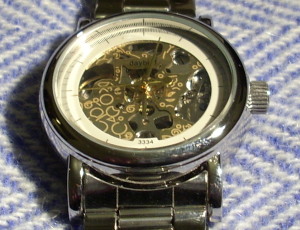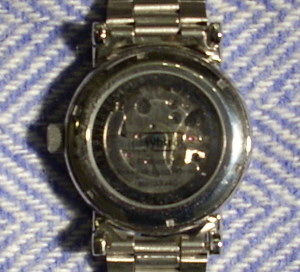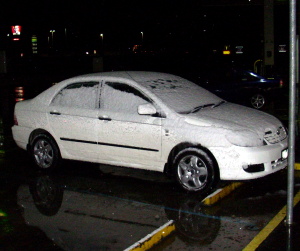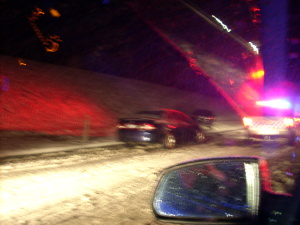This somewhat ugly chandelier adorns the ceiling of our lounge room. Before you ask, we rent, we didn’t choose it that way.

I only just realised: there’s a very long and perverse story in this banal light fitting:
It’s meant to imitate a crystal chandelier, but it’s mostly glass.
Parts of it (the arms) are meant to imitate glass, but are in fact plastic.
It’s meant to imitate an array of candles, but it is electric.
Because it emulates candles, it has non-functional cups around the simulated-candle light globe sockets to catch non-existent candle wax.
It’s decorated with shapings which imitate flowers, grapes or tears, and bunchings of fabric, all in glass or plastic.
Its globe sockets are deliberately tiny, both hearkening to an older standard and attempting to enforce a reduced total wattage.
The globe sockets deliver 50Hz 240volt AC power to what is expected to be five incandescent filament bulbs in the range of 15 to 40watts each, but each globe now contains its own tiny regulated transformer which provides power suited to a cold fluorescent coil, bunched and spiraled to imitate the shape of an incandescent globe.
The globes are in turn a specialized variety of fluorescent imitation-incandescent globe, tailored to fit this obscure size and shape of socket. They consume less wattage than was ever intended for the light fitting, but produce more light…
Every part of this light is trying to imitate at least one other thing, if not several things, recursively, some of them thousands of years old. I wonder what else I’ve missed…?











